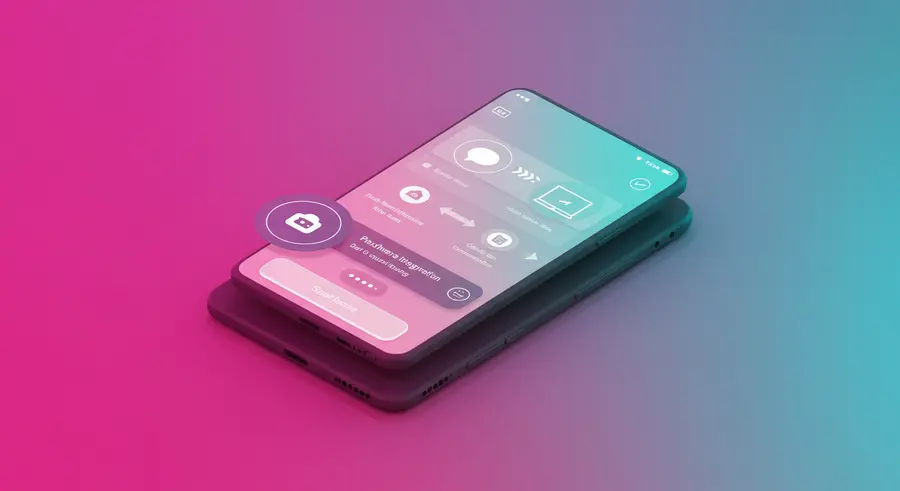Appearance

Welcome, tech pioneers! 👋 Today, we're diving deep into the exciting world of Progressive Web Apps (PWAs), moving beyond the well-known benefits of offline access and responsiveness to explore their truly advanced capabilities. If you thought PWAs were just about basic offline support, prepare to have your mind expanded!
PWAs are rapidly evolving, blurring the lines between web and native applications. They harness modern web technologies to deliver app-like experiences directly from your browser, offering incredible performance, reliability, and engagement. You can learn more about the foundational power of PWAs in our catalogue: The Power of Progressive Web Apps (PWAs).
Beyond the Basics: What's New and Exciting?
While offline functionality is a cornerstone of PWAs, the true "next frontier" lies in their ability to tap into device hardware and provide a more integrated user experience. Let's explore some of these game-changing features:
🔔 Push Notifications and Background Sync
Imagine an e-commerce PWA that notifies you about a price drop on a product you're eyeing, even when the browser is closed. Or a social media PWA that silently syncs your latest feed updates in the background, so they're ready the instant you open the app. This is the power of:
- Push Notifications: Engage your users with timely, relevant alerts, just like native apps. This keeps them connected and informed, driving re-engagement and retention.
- Background Sync: Ensures that actions performed offline, like sending a message or submitting a form, are automatically synchronized with the server once connectivity is restored. No more data loss or frustrating "you are offline" messages after typing a long response!
These capabilities are crucial for building truly robust and engaging applications that feel native.
🔗 Hardware Access and Device Integration
The web is no longer confined to basic browser interactions. Modern PWA APIs allow access to a growing list of device hardware, opening up a world of possibilities:
- Camera and Microphone Access: Build PWAs that allow users to take photos, record videos, or participate in video calls directly within the web app. Think about a PWA for document scanning or a virtual try-on experience for online shopping.
- Geolocation: Create location-aware PWAs for navigation, local service discovery, or tracking. Imagine a PWA for finding the nearest coffee shop or tracking your run.
- File System Access: Read and write files directly to the user's device, enabling powerful offline document editing or media management PWAs.
- Bluetooth and USB: While still evolving, these APIs promise to connect PWAs with external devices, enabling use cases like connecting to fitness trackers or controlling smart home devices.
- Clipboard Integration: Seamlessly copy and paste content between your PWA and other applications on the user's device, enhancing productivity.
These advanced hardware integrations empower PWAs to deliver experiences that were once exclusive to native applications, all while retaining the accessibility and ease of distribution of the web.
🌟 Enhanced User Experience and Performance Optimizations
Beyond new capabilities, PWAs continue to push the boundaries of user experience:
- App Shortcuts: Allow users to quickly access specific features of your PWA directly from their home screen or app launcher. This streamlines user flows and improves discoverability.
- Web Share API: Enable users to easily share content from your PWA to other installed applications on their device, fostering organic reach.
- Payment Request API: Simplify online payments by leveraging the user's saved payment information, providing a faster and more secure checkout process.
- Optimized Performance: Techniques like advanced caching strategies (beyond basic service worker caching), pre-fetching, and lazy loading ensure your PWA loads instantly and remains smooth, even on flaky networks.
The Future is Bright for PWAs
The continuous evolution of PWA capabilities signifies a clear trend: the web is becoming an increasingly powerful platform for building sophisticated, high-performance applications. Developers can now create rich, immersive, and deeply integrated experiences that were previously only achievable with native development.
By embracing these advanced PWA features, we can build web applications that are not only accessible and discoverable but also incredibly engaging, reliable, and capable of competing head-on with their native counterparts.
What advanced PWA feature are you most excited about? Share your thoughts in the comments below! 👇